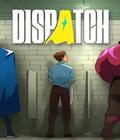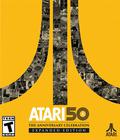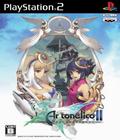Ar Tonelico 2: The Melody of Metafalica takes us to the land of Metafalss in the world of Ar Ciel. Metafalss is a floating land with a unique problem: It's rapidly running out of space for the people who live there. The song of Metafalica could create new land, but the goddess refuses to allow it to be sung, so the land is in the midst of a civil war between two factions: the Sacred Army, who wants to serve the goddess and the Neo Grand Bell, who wish to rebel against her so they can sing Metafalica unhindered.
At the center of this battle is Lady Cloche of the Neo Grand Bell, who is a powerful Reyvateil, a human woman with the unique ability to craft Song Magic, which is the most powerful weapon available to mankind and the source of almost everything in the world of Ar Ciel. During an assassination attempt on Lady Cloche, a talented Neo Grand Bell rookie knight named Croix is forced to guard her, and before long, they're caught in a civil war that threatens Metafalss — and possibly the entire world.
One thing that has to be mentioned is that Ar Tonelico 2's translation is by far the worst that Nippon Ichi has done. The translation is full of glaring errors that are shocking, considering the usual good quality of their products. There are quite a few lines, both important and inconsequential, that range from bizarrely unnatural to borderline incoherent, and the translation seems to get worse as the game goes on. Even if you ignore those translation difficulties, there are plenty of others to note. Different words are used for the same object, making the awkward translations even more confusing. There are also numerous typos and typeface errors, resulting in gibberish text or text scrolling outside of the text box. There are even lines that are still in Japanese.
The translation problems continue into the voice acting. Not every line in the game was translated into English voice acting, so you'll randomly hear characters change from English to Japanese. This sort of translation would be frustrating in most RPGs, but in a game built around character interaction and development, the incoherent translation has the potential to ruin the experience. It turns what could have been interesting developments into laughable and poorly translated messes.
There is even a glitch involving a late-game boss. If you can't defeat the boss within three rounds, the game will crash, so you won't be able to finish the game unless you can defeat the boss before that. This error is not present in the Japanese version of the game, so only U.S. fans get this "added challenge." A few glitches or errors are expected in every production, but it's absolutely mind-boggling that there are so many errors, they are so blatant, and they made it into the final product.
Combat in Ar Tonelico 2 is a two-stage affair. The first phase of combat is the Attack phase, and it's surprisingly complex. You have two party members: your two Reyvateil and the Vanguard. Your Reyvateil sit in the back of the party, charging up a spell, and are functionally automatic except for when you select the spell. The Vanguard, on the other hand, take the active part of combat. A small "timer" bar runs on the lower-left corner of the screen, showing how much time your Vanguard has to attack. Attacking is done by pressing the X or Square button, each of which corresponds to one of the Vanguard. Pressing a directional button and the button causes the Vanguards to unleash different kinds of attacks, which I'll get to later. You keep attacking until the enemy is defeated or time runs out. When Harmonics are high, your Vanguards can "charge" an attack, which is represented by a small bar underneath the characters. If the bar fills up to Level 2 before you choose to attack, you can use a Level 2 attack. If it fills up to Level 3, you can use a Level 3 attack, which can only be used once per Attack phase.
Each of the four Vanguard attacks corresponds to a particular "emotion" that the Reyvateil have. Located in the middle of the timer bar is the Emotion Gauge, which is shown in the form of a four-point diamond-shaped Cartesian-style graph and displays the exact attacks the Reyvateil want you to use. Each use of your attack in a particular direction fills up one direction, and using enough to "fill up" that direction pleases your Reyvateil and grants you a bonus, from increases to the power and duration of your Reyvateil's magic to initiating Psych attacks, which can, if used often enough, activate the Reyvateil's powerful Synchronicity Chain mode. Filling up these directions not only improves your combat power, but also unlocks EX Attacks. For each "request" you fulfill, the Vanguard gains a point toward their EX Attack. Gain enough points, and you can use the EX attack, which does a ridiculous amount of damage.
As mentioned before, the Reyvateil are a lot simpler. You pick a spell, and they begin to chant the Song Magic. The longer your chant, the greater the effect of the spell, although chanting drains MP from your Reyvateil, and you can only chant as long as you have MP. There are two kinds of Song Magic: blue and red. Blue magic is support magic in that it doesn't do damage and only heals or boosts your team. However, blue magic can be "canceled" into red magic without losing all of the gathered energy you have. Red magic is attack magic; the more you gather, the more powerful it is, and you can unleash it at any time by pressing the Circle button.
Song Magic can "evolve" to greater levels of power, depending on which requests you fulfill on the Emotion Gauge. Different songs have different requirements, and if you use enough Psych moves, your two Reyvateil will "sync," allowing you to activate the powerful Synchronicity Chain moves. If your red magic evolves into Synchronicity Magic, you'll gain a brief period when your Vanguards can attack without limit and your Reyvateil can chant without using MP. The Synchronicity Magic only lasts until the Reyvateil become unsynced, at which point the red magic is automatically used, regardless of charge.
The second phase of combat, the Defense phase, is a lot simpler. You have to play a small mini-game to defend your Reyvateil from attacks. A small bar will pop up in front of your Vanguard characters, and green lines will begin scrolling down the bar, representing enemy attacks. You have to press the Vanguard's button when the bar enters a certain area to defend against the attack. The closer you are to that area, the more effective the defense. Successful defenses increase the Reyvateil's spell power, and guarding plays into your rank at the end of battle. The more successful you are, the easier it is to get an "S" rank in battle, which in turn gives you more items and Dive Points.
However, this system suffers from a few major flaws. Once you gain the Guard abilities, the game's small amount of challenge is all but gone. Your characters are functionally invincible if your defense is even remotely on target, making all battles frustratingly boring — if it weren't for another of the game's many glitches. During particularly big attacks, the game jerks around and pauses, making it nearly impossible to defend because it screws up the Guard bar. By the time the game "catches" up, the timing is thrown off, and you take a hit that you should've been able to block. This also means that in short battles, you can fail to get an "S" rank entirely because of the game's problems, not your own skill. If the game were harder, this would be an unforgivable error, and as it stands now, it's merely extremely frustrating.
Despite such a complex combat system, Ar Tonelico 2 is actually a very easy game. If your timing is good, you're almost invincible from the outset, and even if it isn't, the game offers enough handicaps to make it easy for average players. Your characters are ridiculously overpowered, and between EX Attacks and Synchronicity Chains, you can do absolutely ridiculous damage to bosses. The only "difficult" enemies are the Level 9 IPDs (Infel Pira Dependency). You can generally get through the game by button-mashing and casting whatever spell you want, which makes the somewhat-interesting combat system worthless except for those who really enjoy seeing their damage numbers reach Disgaea levels of excess. The only difficult optional boss suffers from the exact same "three turns or the game crashes" glitch as the story line boss, and thus is "challenging" for all the wrong reasons. The battles are incredibly slow, with long unskippable animations, and even a battle you can win in a single attack usually takes more than 30 seconds for all of the setup, which can become fairly tedious.
For the most part, dungeons are extremely boring in Ar Tonelico 2. There is almost nothing involved with them besides walking through a handful of borderline-identical areas and fighting monsters from time to time. Unlike Ar Tonelico 1, there is no Song Magic to use on the map. There are no special abilities at all, so you can't even jump. The only things to break up the monotony of the dungeons are rare encounters with IPD Reyvateils, who are rampaging monsters who seek to destroy anything that approaches. Sometimes, battle with the IPDs is optional, and sometimes they're not, but you never have to fight one until you chose to. They're mildly powerful optional bosses, although most of them are basically identical; they have the same few attacks and one "unique" attack. Defeating them "contains" them, and you get no experience or money for doing so.
Once you've captured IPDs, your next goal is to purify them by using Dive Therapy, which is a fairly simple mini-game. You've given five chances to talk to the captured IPD and two dialogue choices. Your choice will either increase or decrease her tension bar, and your goal is to get the bar within a certain range. You can even use special drugs to increase or decrease the effect of your words on the IPD, and it isn't too difficult … or it wouldn't have been, if the translation were more solid. Instead, most of the IPD quotes are basically incoherent. You get a vague idea of what the IPDs want, but a lot of your choices are going to be random guesses as you try to figure out what the oddly translated lines are supposed to mean. Thankfully, you're not punished for failing to purify an IPD, so you can just try again. Once you've purified an IPD, she becomes available for Girl Power, which lets you equip one of the IPDs to your Vanguard characters, giving them greater combat abilities. Furthermore, any IPD you've equipped to your Vanguard will level up, gaining up to three additional attributes.
This also plays into the second part of IPD purification: the Cloche Fan Club. Once an IPD is purified, she can be invited to join Lady Cloche's Fan Club. To do this, you must complete a specific objective for the IPD, which can be as simple as finding a specific item or defeating a specific enemy, to being as complex as spending a specific amount of money or reaching a certain point in the story. Once IPDs join the fan club, they become available for Replakia, which is Cloche's special ability in battle. It can be used once per battle and boosts the current Song Magic by a huge amount, amplified by each member in the fan club, up to 100 different Reyvateil. Few of the requirements are particularly hard to meet, and you'll easily recruit 50 or more Reyvateil just by fighting random battles and performing basic tasks.
One of the most important systems returning from Ar Tonelico is the Dive system, which is the primary non-combative way to power up your Reyvateil. You're sent into the Reyvateil's mindscape to become closer to them and help them craft stronger Song Magic. Every event you view in a dive requires Dive Points or DP, which are earned by battle. As you view more events, you'll craft stronger Song Magic. It's not a particularly complex system and mostly involves watching cut scenes. However, unlike Ar Tonelico 1, you can only max out a single Reyvateil in Ar Tonelico 2. The other two will remain stuck at Level 5 forever. This can be a bit frustrating because it means that you may lose access to your only good Reyvateil at various times throughout the game, but Ar Tonelico 2's low difficulty levels mean that isn't really an issue.
The other way to power up your Reyvateil is with the Dualstall system, which is … odd, to say the least. Your Reyvateil power up by taking a bath together, and no, that's not a typo. The bathtub is a grid-based board where you can place special crystals, up to three crystals per Reyvateil in your party. You can also place bath toys and bath soaps into the tub. Any Reyvateil who takes a bath with a crystal they've never bathed with before gains levels. Furthermore, the Reyvateil will move around the large bathtub, usually toward the bath toy you put in the tub. If they pass through a square with a crystal in it, they'll gain a special power. It's an interesting idea, but a bit too random, and it can be exceedingly frustrating to repeat a bath four or five times because Luca decided to take the long way to the rubber ducky instead of the short way. Taking a Dualstall bath together also gives the Reyvateil a chance to talk, which boosts the Sync level.
Your Reyvateil can also be used to craft items. Once you get a recipe from a shopkeeper, you can have one of your Reyvateil attempt to craft something. Certain Reyvateil can only craft certain things, and the end result is that you'll have to create the same "object" multiple times with different Reyvateil to get every possible variation. The crafting system is quite boring and poorly designed. In previous Gust games, you'd usually find synthesis recipes and be able to create items from those recipes. In Ar Tonelico 2, you're given the recipes by the synthesis makers. This means visiting them, at which point they'll give you one recipe. Then you leave, go all the way back out of the city and come right back so they can give you another one.
There are also four different Synthesis locations, each of which is located in a different city. Those who played Mana Khemia may recall how annoying it was to walk down the hallway to create the ingredient you need for your latest recipe. Multiply that by four, and make it far less intuitive and reasonable to get recipes, and you've got Ar Tonelico 2's crafting system. Your reward for this is items, most of which are useless except for the fact that some IPDs will ask for items before they can be purified.
All of the above features play into a very annoying habit Ar Tonelico 2 has: the revolving party door. Up until the very end of the game, you keep randomly losing party members. This isn't so bad with your Vanguards, but it is exceptionally annoying for your Reyvateil, who are walking disaster factories. It's rare you'll go through more than one or two plot points without a Reyvateil going into a coma, leaving your party to sulk, being captured, or various other things. The problem is that since the Reyvateil are so interconnected, losing one basically limits you from many of the game features. One of the most frustrating moments is when the game takes away two of your Reyvateil and sticks you with only the third, who you had just gotten, and can only participate in the Dive system if you have the other two Reyvateil in your party. Thankfully, the game is easy enough that this doesn't make it difficult to win, but it's deeply annoying to make the slow battles take even longer simply because you can't get more powerful magic.
Ar Tonelico 2 uses the same high-quality sprites as other Gust titles, although a bit less effectively. The battle animations are nice, but the map animations are weaker, and there is more repetition in sprites than there should be. Particularly annoying are the IPDs; each IPD has a unique look and outfit, but their map sprites are all identical, with the same hair, same face and same clothing. The only difference between IPDs is their coloring. Even worse, the coloring of the sprites doesn't even come close to matching the coloring of the artwork. There isn't much variation in the environments or the level design, which makes the boring and unmemorable dungeons all the more tedious. The only thing that makes Ar Tonelico 2 stand out are the high-quality sprites, and those are roughly the same as every other Gust title that Nippon Ichi has released.
Ar Tonelico 2's strongest point is its soundtrack, which is packed to the brim with unique and interesting songs from the Gust sound team, combing classic RPG music with melodious hymns, much like the first game did. Indeed, the quality is so good that one of the pack-ins for Ar Tonelico 2 is the soundtrack CD. The voice acting is fairly good, although there are a few cases when the actors quite clearly didn't know the context of their lines. The voices in combat can also get annoying, as you'll hear the same quotes over and over again during the overly long fights. As mentioned above, the English dub has some glaring omissions, and you'll notice quite a few situations when it randomly switches over to Japanese regardless of the voice track that you're using, and it sounds incredibly awkward every time it occurs.
Unfortunately, I can't recommend Ar Tonelico 2: The Melody of Metafalica to any but the most hardcore of RPG gamers, and even they would only want it as a collectible. Combat is overly long and easy, and once you get the correct IPDs, the only reason you'll take damage is because of the annoying lag. The plotline is fairly boring and predictable, and most of the characters are humdrum clichés or have no personalities at all. Worst of all, the game's extremely low production quality renders it borderline unplayable. The awful translation is only compounded upon by glitches and errors that range from the minor to the game-breaking. If you're willing to overlook Ar Tonelico 2's many flaws, you'll find a mediocre RPG waiting underneath. In the wake of older and better titles such as Nippon Ichi's own Mana Khemia, Ar Tonelico 2 just isn't a game that can be recommended to anyone.
Score: 4.0/10
More articles about Ar tonelico 2











 Ar tonelico 2 is an RPG that seamlessly combines simulation with role-playing, allowing gamers to not only customize weapons and items, but now design their character’s personalities, skills, and appearance through virtual interaction. Also past events will intersect with future game play as well as the outcome of the game.
Ar tonelico 2 is an RPG that seamlessly combines simulation with role-playing, allowing gamers to not only customize weapons and items, but now design their character’s personalities, skills, and appearance through virtual interaction. Also past events will intersect with future game play as well as the outcome of the game.








































